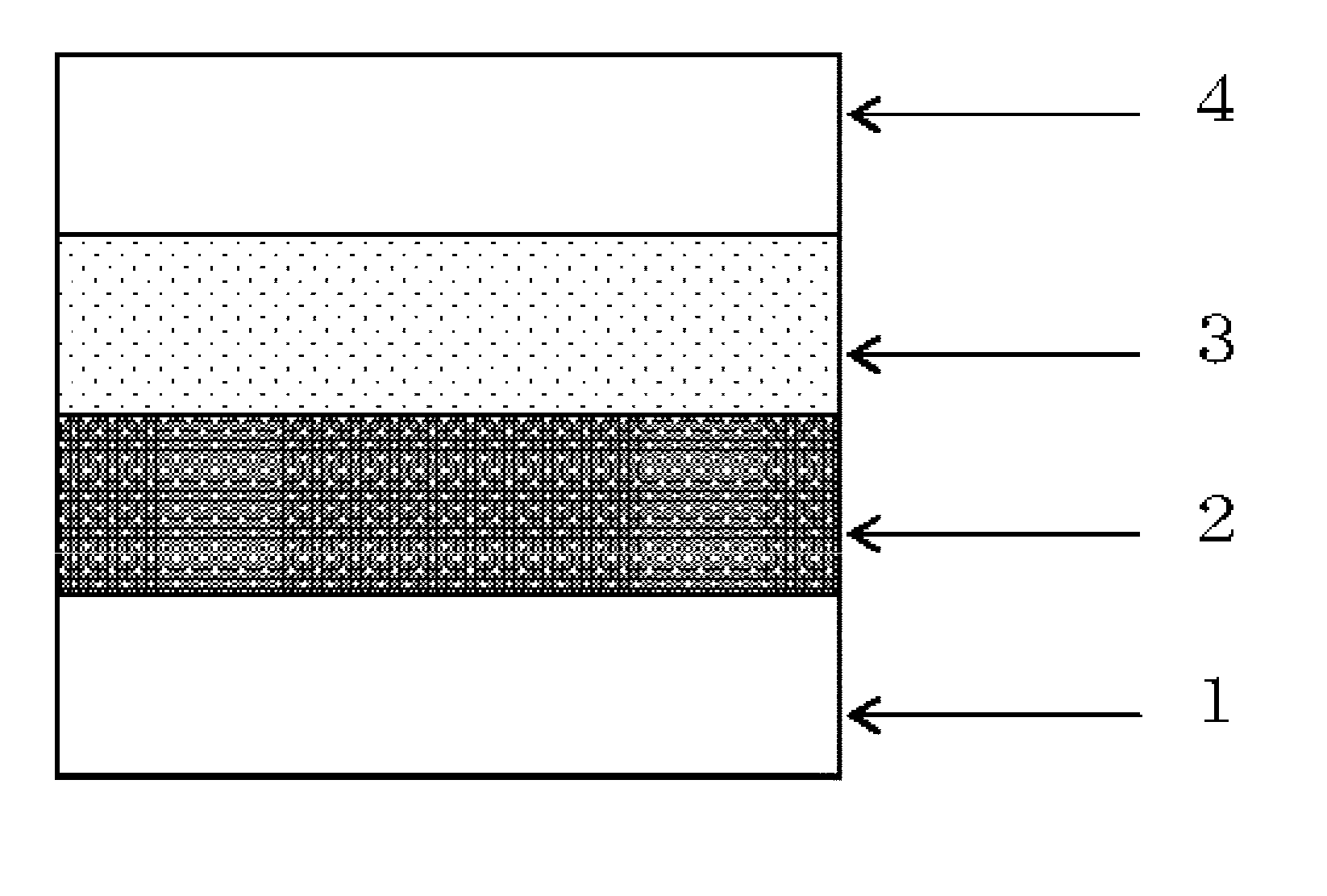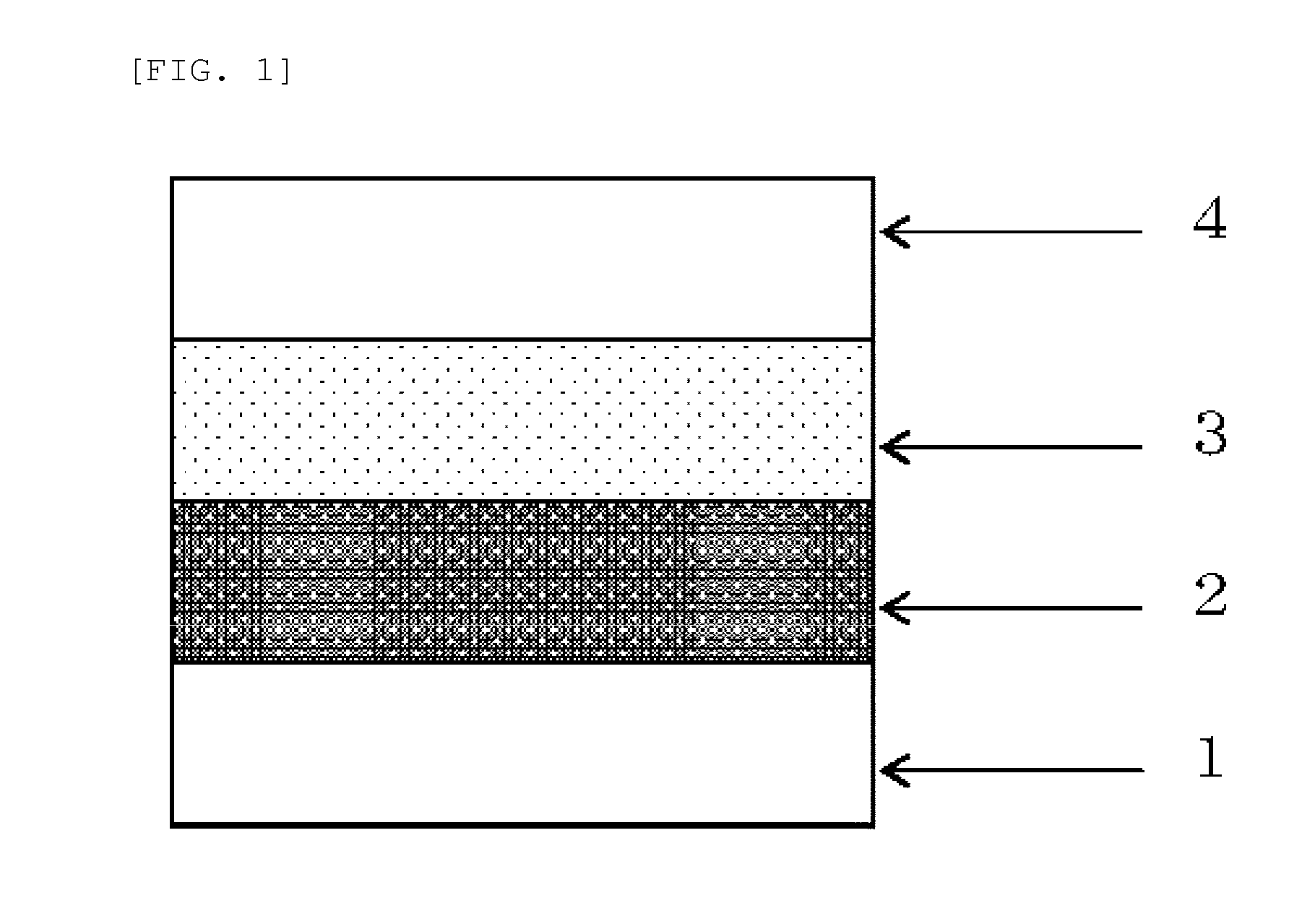Polymer for pressure sensitive adhesive, pressure sensitive adhesive composition and heat-peelable pressure sensitive adhesive sheet
a technology of pressure sensitive adhesives and polymers, applied in the field of polymers, can solve the problems of reducing productivity, reducing adhesive strength, and small adhesion area per chip, and achieves the effects of reducing product cost, reducing adhesive loss, and reducing adhesive strength
- Summary
- Abstract
- Description
- Claims
- Application Information
AI Technical Summary
Benefits of technology
Problems solved by technology
Method used
Image
Examples
example 1
[0097]A coating liquid in which 100 parts by weight of a copolymer of ethyl acrylate / 2-ethylhexyl acrylate / hydroxyethyl acrylate (55 parts by weight / 45 parts by weight / 5 parts by weight) and 1.5 parts by weight of an isocyanate crosslinking agent were homogeneously mixed and dissolved in toluene was applied onto a support substrate (of PET with a thickness of 100 μm) into a thickness of 35 μm attained after drying and then dried, so as to form a rubber-like organic elastic layer. Subsequently, a coating liquid in which 100 parts by weight of a copolymer of ethyl acrylate / 2-ethylhexyl acrylate / hydroxyethyl acrylate / N-hexylmaleimide (55 parts by weight / 45 parts by weight / 5 parts by weight / 5 parts by weight), 1.5 parts by weight of an isocyanate crosslinking agent and 30 parts by weight of thermally expansive microspheres foaming and expanding when heated to 120° C. were homogeneously mixed and dissolved in toluene was applied onto a separator (a PET substrate with a thickness of 38 μm...
example 2
[0099]A coating liquid in which 100 parts by weight of a copolymer of ethyl acrylate / 2-ethylhexyl acrylate / hydroxyethyl acrylate (70 parts by weight / 30 parts by weight / 5 parts by weight) and 1 part by weight of an isocyanate crosslinking agent were homogeneously mixed and dissolved in toluene was applied onto a support substrate (of PET with a thickness of 100 μm) into a thickness of 15 μm attained after drying and then dried, so as to form a rubber-like organic elastic layer. Subsequently, a coating liquid in which 100 parts by weight of a copolymer of ethyl acrylate / 2-ethylhexyl acrylate / hydroxyethyl acrylate / N-phenylmaleimide (70 parts by weight / 30 parts by weight / 5 parts by weight / 2.5 parts by weight), 1 part by weight of an isocyanate crosslinking agent, 7 parts by weight of a rosin phenol resin and 30 parts by weight of thermally expansive microspheres foaming and expanding when heated to 120° C. were homogeneously mixed and dissolved in toluene was applied onto a separator (a...
example 3
[0100]A coating liquid in which 100 parts by weight of a copolymer of ethyl acrylate / 2-ethylhexyl acrylate / hydroxyethyl acrylate (70 parts by weight / 30 parts by weight / 5 parts by weight) and 1 part by weight of an isocyanate crosslinking agent were homogeneously mixed and dissolved in toluene was applied onto a support substrate (of PET with a thickness of 100 μm) into a thickness of 15 μm attained after drying and then dried, so as to form a rubber-like organic elastic layer. Subsequently, a coating liquid in which 100 parts by weight of a copolymer of ethyl acrylate / 2-ethylhexyl acrylate / hydroxyethyl acrylate / N-phenylmaleimide (70 parts by weight / 30 parts by weight / 5 parts by weight / 5 parts by weight), 1 part by weight of an isocyanate crosslinking agent, 7 parts by weight of a rosin phenol resin and 30 parts by weight of thermally expansive microspheres foaming and expanding when heated to 120° C. were homogeneously mixed and dissolved in toluene was applied onto a separator (a P...
PUM
| Property | Measurement | Unit |
|---|---|---|
| adhesive strength | aaaaa | aaaaa |
| shear modulus | aaaaa | aaaaa |
| glass transition temperature | aaaaa | aaaaa |
Abstract
Description
Claims
Application Information
 Login to View More
Login to View More - R&D
- Intellectual Property
- Life Sciences
- Materials
- Tech Scout
- Unparalleled Data Quality
- Higher Quality Content
- 60% Fewer Hallucinations
Browse by: Latest US Patents, China's latest patents, Technical Efficacy Thesaurus, Application Domain, Technology Topic, Popular Technical Reports.
© 2025 PatSnap. All rights reserved.Legal|Privacy policy|Modern Slavery Act Transparency Statement|Sitemap|About US| Contact US: help@patsnap.com


